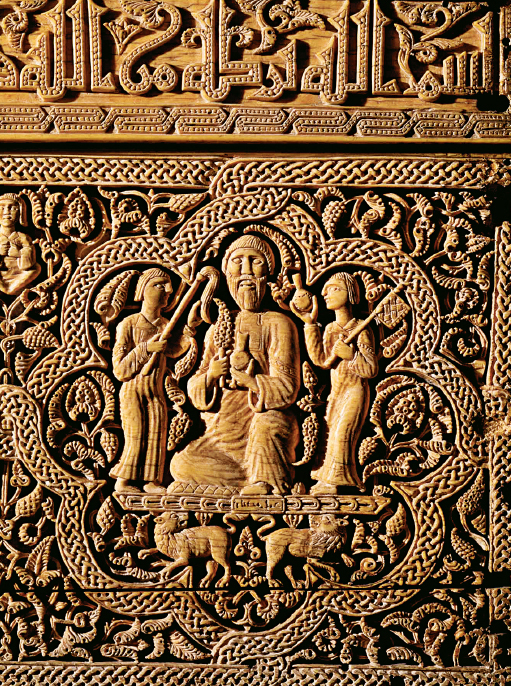Understanding World Societies:
Printed Page 237
> What made possible the spread of Islam, and what forms of government were established to rule Muslim lands?

The court of the Spanish Umayyads prized small, intricately carved ivory chests, often made in a royal workshop and used to store precious perfumes. This exquisite side panel depicts an eleventh-
AAccording to Muslim tradition, Muhammad’s preaching at first did not appeal to many people. In preaching a transformation of the social order and calling for the destruction of the idols in the Ka’ba, Muhammad challenged the power of the local elite and the pilgrimage-
At Medina, Muhammad attracted increasing numbers of believers, many of whom were Bedouins who supported themselves by raiding caravans en route to Mecca, setting off a violent conflict between Mecca and Medina. After eight years of strife, Mecca capitulated. In this way, by the time Muhammad died in 632, he had welded together all the Bedouin tribes.
Muhammad displayed genius as both a political strategist and a religious teacher. He gave Arabs the idea of a unique and unified umma (UH-